Beautiful abandon: the romance of the ruin
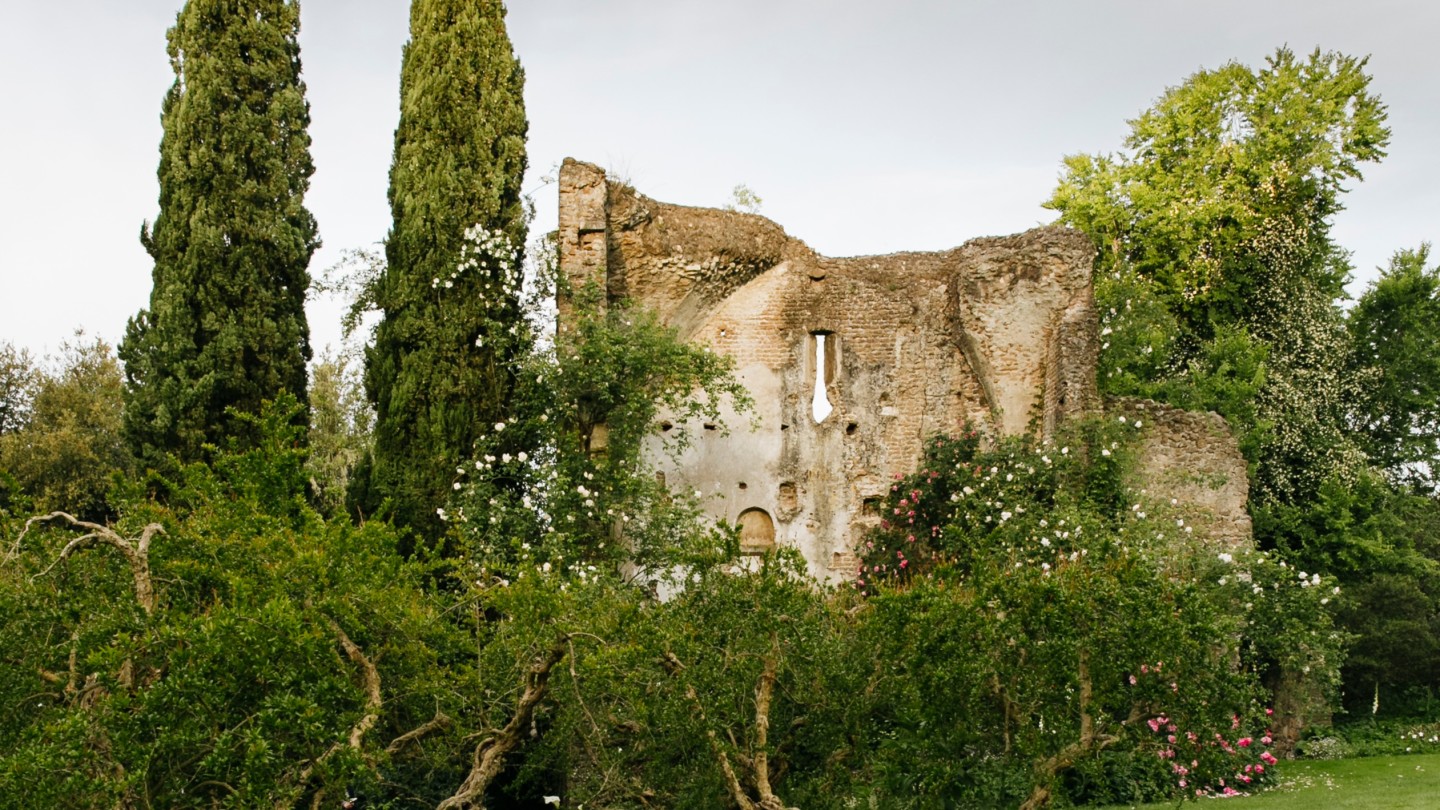
Roula Khalaf, Editor of the FT, selects her favourite stories in this weekly newsletter.
When Vita Sackville-West and her husband Harold Nicolson discovered Sissinghurst Castle in the spring of 1930, the sprawling estate had been on sale for two years and the ruinous remains of the Tudor manor house were uninhabitable. The garden, meanwhile, was a dump that would take three years to clear of brambles, weeds and rubbish. “It was the Sleeping Beauty’s castle with a vengeance, if you liked to see it with a romantic eye,” the writer and gardener later recalled in House & Garden magazine in 1950.
Over those two decades the couple carved out what would become one of the most atmospheric and imitated gardens in the world, its Elizabethan walls smothered with clambering roses, magnolia and sprawling clematis as Sackville-West crammed every nook and cranny with nature.
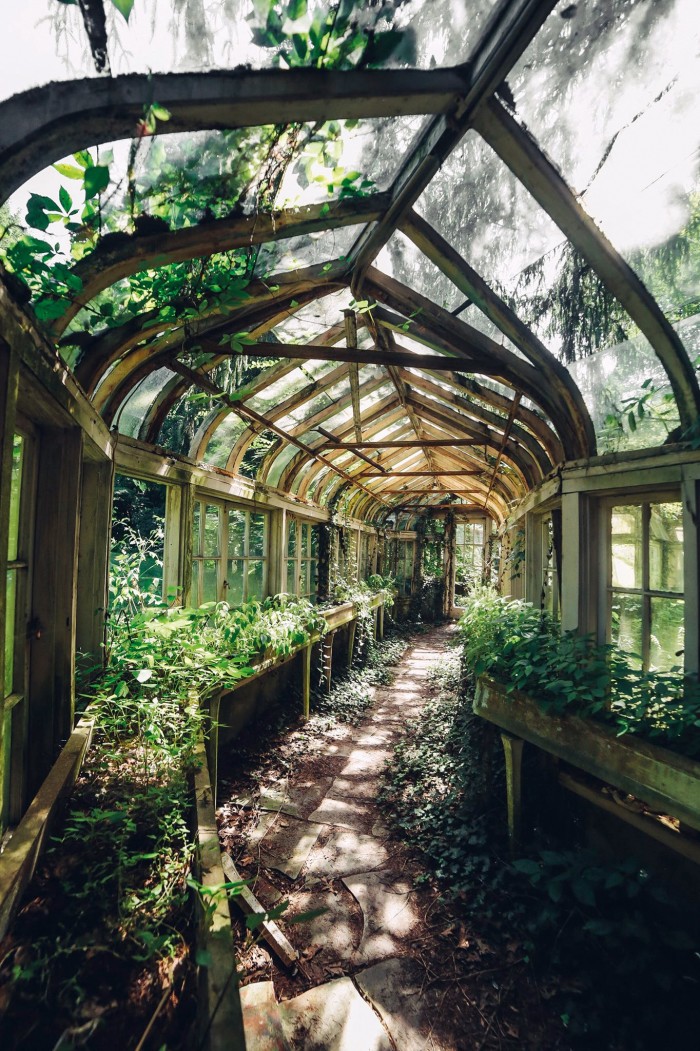
The delicious possibilities of a ruin – of tumbledown walls, crumbling buildings and nature winding its way into all the cracks – have inspired and tempted gardeners for centuries. We are hardwired to dream of forgotten spaces that appear on Instagram platforms such as @itsabandoned: the tantalising idea of them is woven into folklore and fairytales. Such is their timeless appeal that in Scotland the government is considering proposals to preserve ruined castles, stately homes and other buildings by echoing the success of Spain’s Paradores Nacionales – which since 1928 has transformed 95 monasteries, convents and castles into luxurious hotels that preserve the building and spirit of a place while also turning a profit for the government. Over the past year, those possibilities have been given added resonance. With access to nature removed, wildness has taken on an incredible potency, not least in our gardens and landscapes.
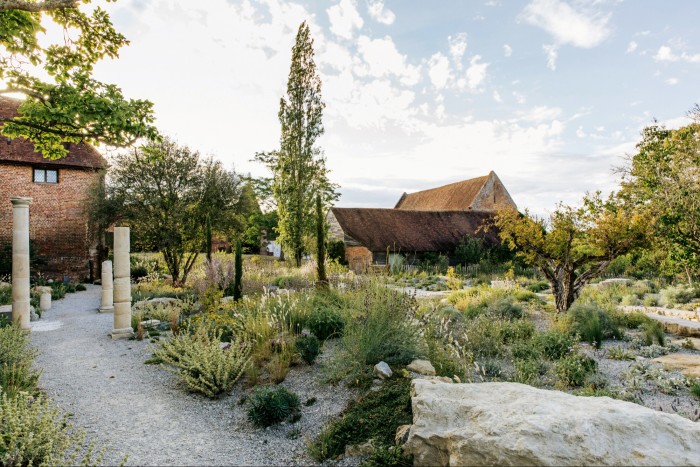
“It’s soul food,” says landscape designer Dan Pearson, whose life and career have been shaped by abandoned spaces. As a student at RHS Wisley, in Surrey, he wrote his dissertation on the then-abandoned 18th-century gardens of Painshill after clambering over the walls after a lecture one evening. “There were follies and lakes with trees crashed into them, broken bridges and the most extraordinary things,” he says, revealing that the research for his dissertation included a deep dive into the idylls of painters such as Claude Lorrain and Nicolas Poussin.
When, more than a decade later, he was hired to develop the gardens at Torrecchia Vecchia – a medieval 1,500-acre estate south of Rome – it was, he says, like arriving into one of those paintings, and the gardens he has created there are a masterclass in the lightness of touch required to create something that looks entirely natural and time-forgotten. There are gentle layers of planting that barely leave an imprint yet dial up the atmosphere: white “Madame Alfred Carrière” roses tumble out of mellow stone; cascades of white Wisteria floribunda alba hang from pergolas, arches and walls; lawns are edged with swathes of white foxgloves, orange-scented philadelphus and ferns; and stone steps are smothered with the cheerful daisy flowers of Erigeron karvinskianus. At a practical level, ruins often provide a perfect microclimate.
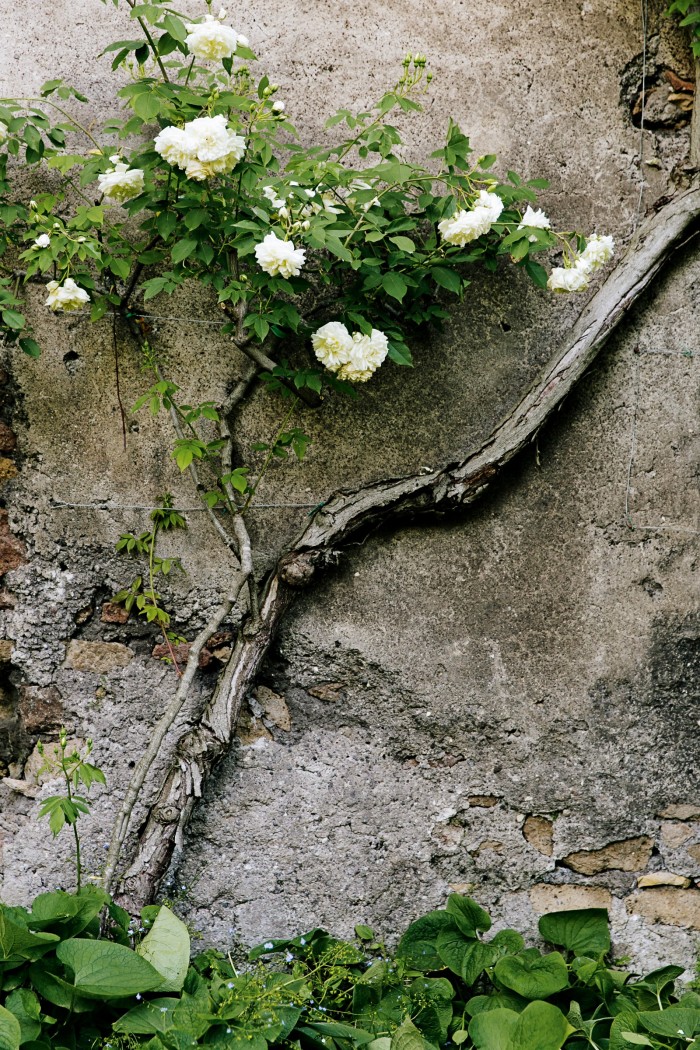
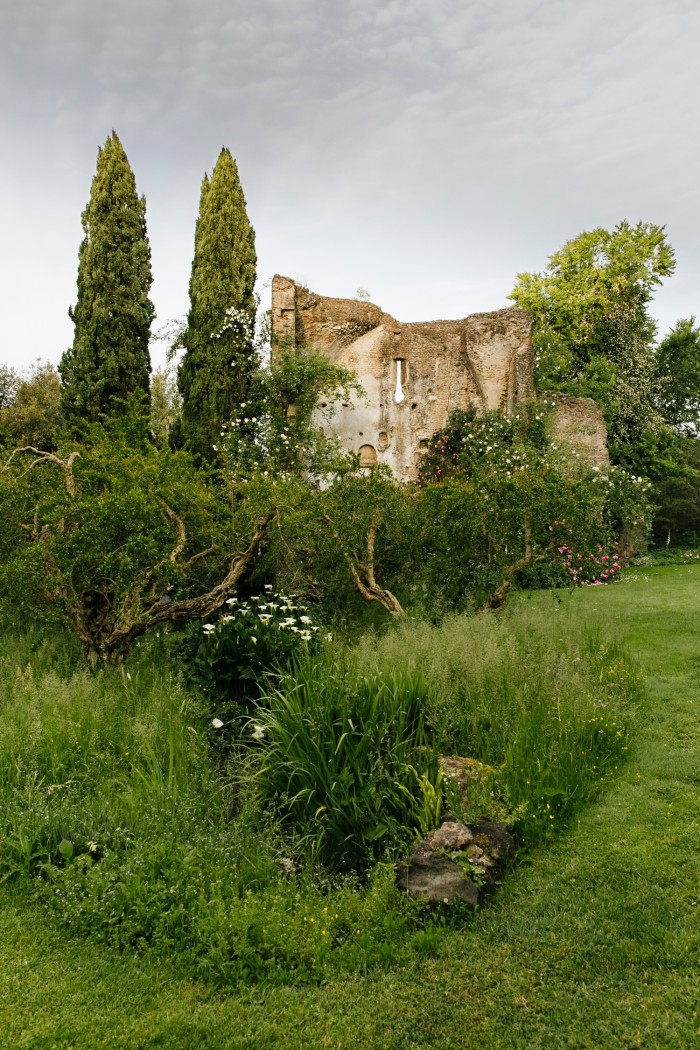
Crafting a garden or landscape from a ruin has since become a speciality for Pearson, from Cumbria’s castellated 19th-century Lowther Castle to back at Sissinghurst where, last year, his reworking of Delos – a garden based on the ruined landscapes of the Greek island and which had originally been conceived by Nicolson and Sackville-West in the 1930s – was completed, with Mediterranean planting, great boulders and lonely columns standing as though they were the remains of a forgotten temple. (It will open officially this summer.)
But this fascination for forgotten spaces is hardly new. From 19 May, London’s Sir John Soane’s Museum is staging The Romance of Ruins, showcasing a group of watercolours produced by the English artist William Pars, who, when aged just 22, travelled with architect Nicholas Revett and antiquary Richard Chandler on an expedition to record the classical ruins and landscapes of ancient Ionia in 1764. Pars’ trip (like many others funded by the Society of Dilettanti) was documented in a sumptuous folio book of the kind that went on to fuel movements such as the Greek Revival. The idea of the ruin was central to the aesthetic, and people would use them as references for their own garden buildings.
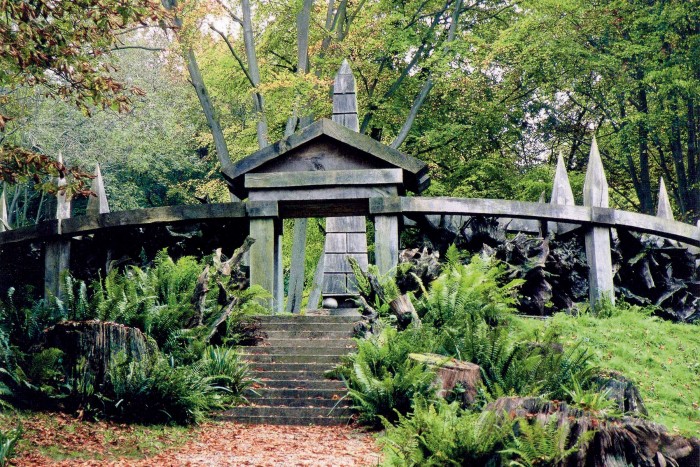
“There was this real idea of connection to the past and bringing it into the present,” says Dr Louise Stewart, curator of exhibitions at the museum. “There was a sense of a yearning for a lost past that seemed greater than the present and more perfect. The ruin encapsulates it but you can trace it back much further. The Elizabethans built follies in their gardens as ruins to hark back to a romantic medieval past and also to give a sense of ancient lineage.”
Many centuries later, this perhaps explains why the market for statuary and architectural antiques is flourishing. Instant history is easy to acquire for any garden, and a well-placed pair of urns or an elegant statue in Coade stone nestling under foliage brings an immediate sense of the past when used as a focal point at the end of a path or a punctuation point at a corner. (Summers Place in Sussex holds at least four specialist auctions a year selling garden antiques and natural history.)
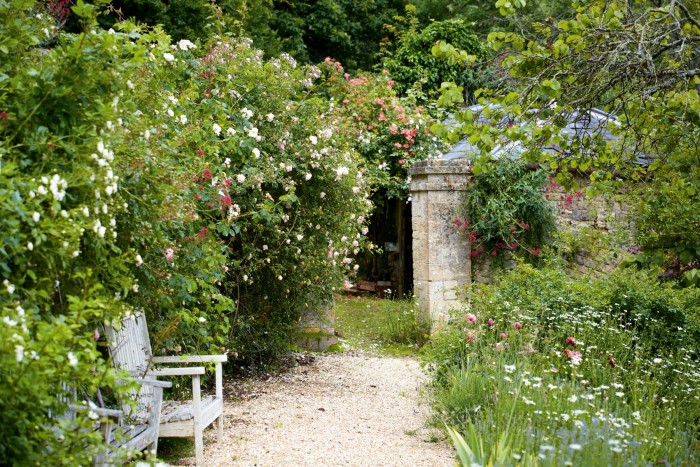
Other “ageing” effects take longer to establish: plant the base of walls and fences with vigorous rambling roses such as “Albertine” with its glossy green foliage and exquisitely pretty pink flowers, maybe an apricot “Ghislaine de Féligonde” or the white rambler Albéric Barbier – all of which have been in cultivation for a century or more and can, over years, be trained to envelop structures. For a masterclass in how to use them on a domestic scale, look at the National Collection of Rambler Roses at Moor Wood in Gloucestershire, where more than 150 varieties take every possible opportunity to smother buildings, mellow Cotswold stone walls and banks or climb 40ft into mature trees.
But you don’t need a bucolic backdrop to capture the mood of a ruin – smaller urban gardens can be transformed too. In south London, on Camberwell Grove, antiques dealers Will Fisher and Charlotte Freemantle’s garden has a time-forgotten feel. “I’m kind of obsessed with decrepit environments,” says Fisher. He separated a long, narrow plot into a succession of rooms linked by stone steps and brick paths, and punctuated by 19th-century pots and artefacts. In the final section, iron gates open to a Romanesque pond. Their first acquisition for the garden, an ancient stone monument that sits behind the pond, was so heavy that it fell through the floor of the first removal truck sent to Italy to collect it.
Fisher advises buying pieces with interesting surfaces and integrity but he’s also happy to fake it – the rear “Roman villa” wall was built with breeze blocks, rendered and then painted in a burnt ochre. The crowning glory is the backdrop of the spire of St Giles’ Camberwell, which ramps up the ancient mood. “I can’t take any responsibility for that – it was a gift from God,” he says.
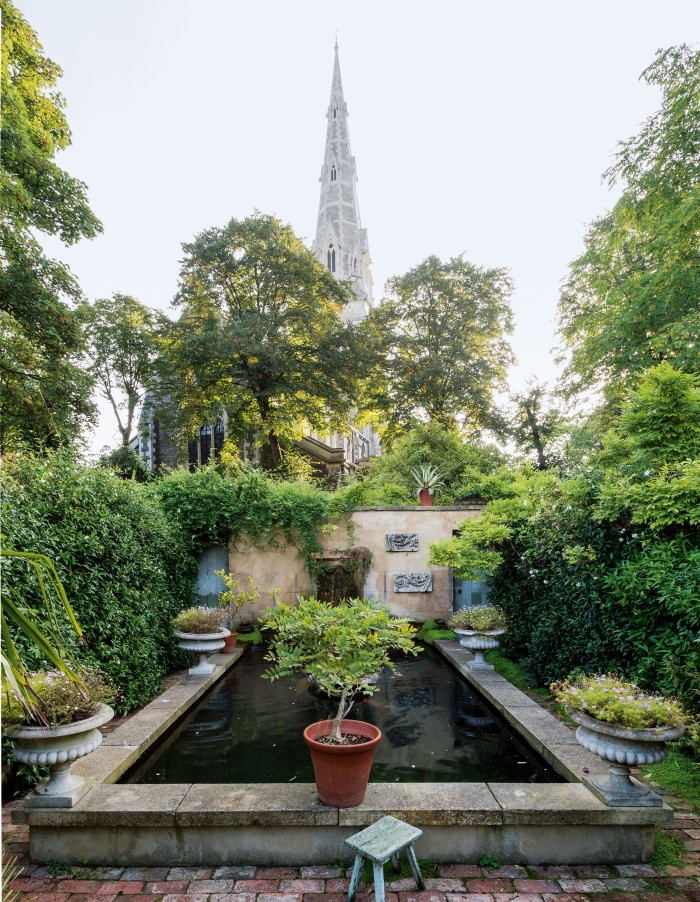
Once the hard landscaping was installed, Fisher and Freemantle set about dressing the garden with suitably atmospheric plants – vines and climbers, including a rambling rose that was planted to create a thorny security blanket but now dominates the back of the garden. “It looks like the most inspired thing we did but it wasn’t planned,” Fisher explains. “I find the architectural elements and hard landscaping easy, but I am revealed as a fraud within five minutes with the planting.” As such, he called upon designer Iain MacDonald to help finesse the planting, which includes shade-loving hydrangeas, alliums and ferns, as well as peonies, bay and yew and Soleirolia soleirolii (commonly known as “Mind-Your-Own-Business”) that fills in the crevices around paths and steps or in between plants.
Similarly, garden designer Alexander Hoyle believes that gentle chaos is key to creating the timeworn look. He loves using self-seeders including bronze fennel, erigeron, centranthus and herbs, as well as spring bulbs that will naturalise over time. Some plants also have an in-built “agedness” about them – espalier fruit trees, oversized topiary, ancient olives and old roses (his favourites include “Prince Camille de Rohan” and “Hermosa”), as well as fast-growing climbers such as Rosa banksiae “Lutea”, wisteria or Clematis montana.
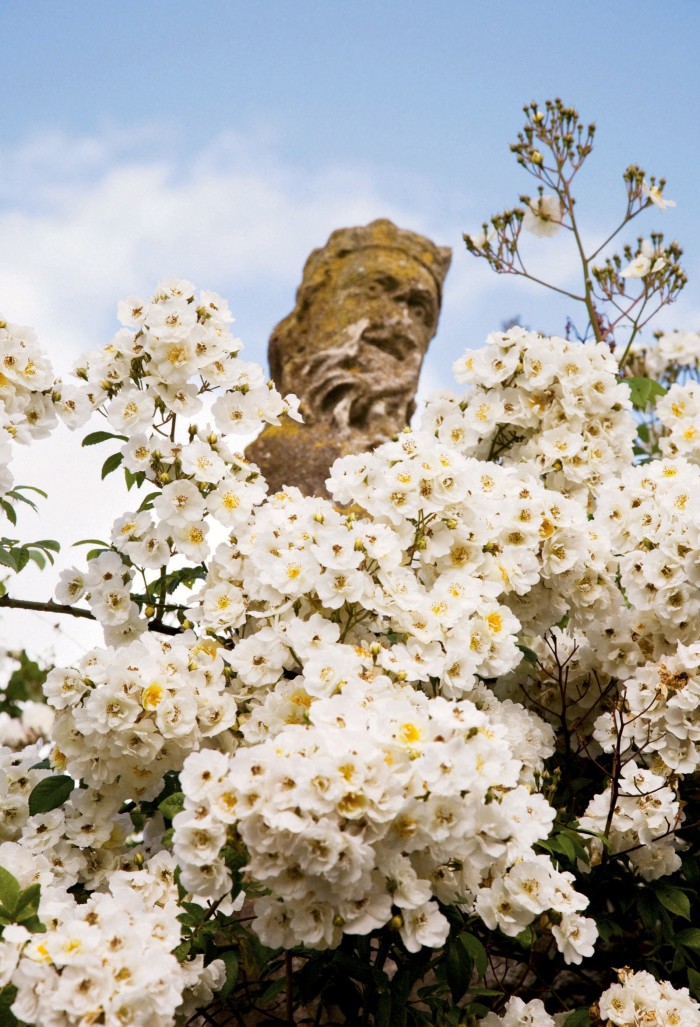
“Yes it takes time – but not as long as one would think,” says Hoyle of the period for such plants to mature. “We’re trying to create this aged effect almost daily – perhaps even subconsciously – in creating gardens and landscapes that look like they’ve always been there.” He is currently working on a timeless, wild courtyard for a midcentury house. Like Fisher, he suggests investing in the very best “feature” pieces – antique coppers, stone troughs, antique urns, statues – and then letting it all go mossy over time, while reclaimed stone paving with cracks can house the odd creeping plant. Hoyle also believes commissioning crafted pieces that will develop a patina over time is money well spent. “I like the idea of another Arts and Crafts period – of reverting to the beauty of materials and using nature as inspiration,” he says.
Isabel and Julian Bannerman have made a career out of ramping up the atmosphere in the gardens of country estates and castles. They introduce their 2016 monograph, Landscape of Dreams, by detailing their lifelong quest for ruinous sites on a serious scale. “We dream waking and sleeping about architecture and landscape, derelict houses and shattered gardens, imagined and actual,” they say in the book. For Isabel Bannerman, the fascination comes from an admiration for the craftsmanship of the past – and because ageing places have a story to tell. “We’ve been reading Jan Morris on Venice and it’s a brilliant reference to the dichotomy between wanting to keep things as they are and accepting change, and that ultimately everything must die,” she says. “If you are creative, you do have a love affair with change and the tension between wanting things to stay the same and making your mark. Ruins are a reminder of entropy and the futility of perfection.” In times dominated by pandemics, social unrest and climate change, we appear to have arrived at the same point as our forebears: just as the Romantics found solace in an idyllic past, we are insulating ourselves with nostalgia in our landscapes.

Comments